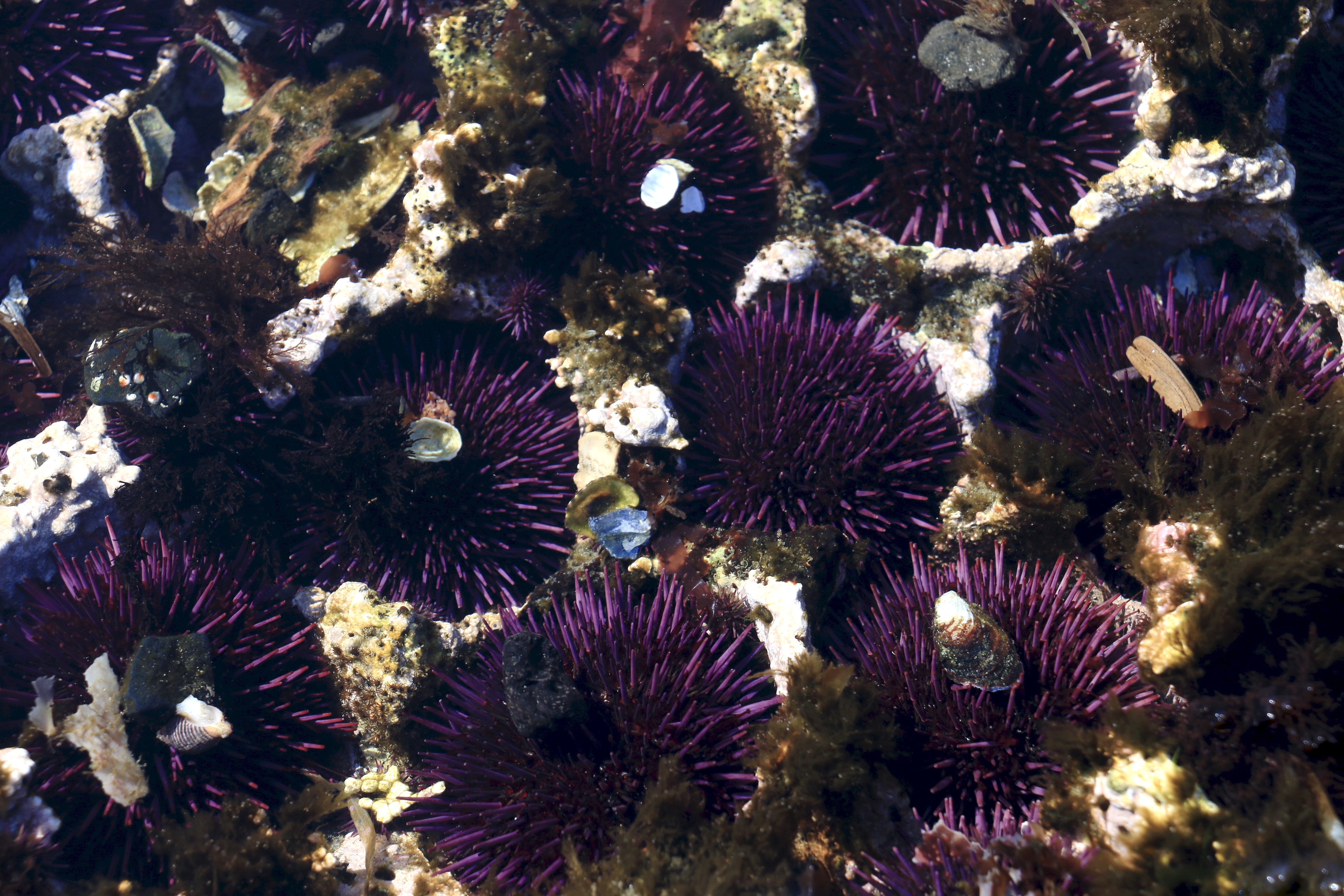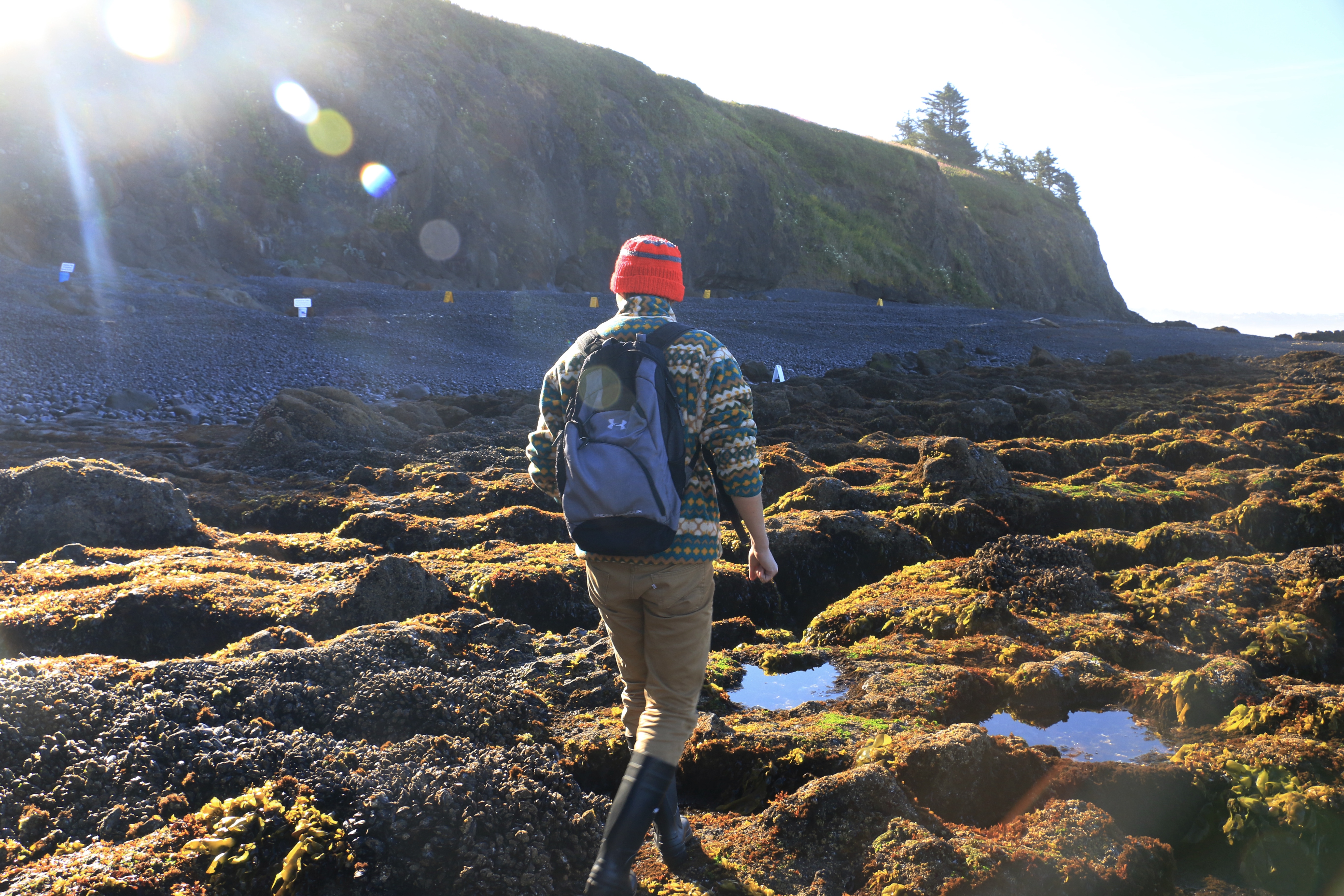Hi There!
Welcome to the convergence between medicine and the environment! I am a new Oregon Sea Grant scholar (actually, I started in late March, but who’s counting?) that was given the wonderfully unique opportunity to attend the Institute of Environmental Health at the Oregon Health and Science University (OHSU) in Portland, OR, under the sage direction of Dr. Tawnya Peterson and Dr. Joseph Needoba. What’s that? Marine scientists at a school of medicine? Life is certainly full of the unexpected!

The Columbia River view from Munra Point, OR.

OHSU campus and tram from the South Waterfront District in Portland, OR (photo courtesy of OHSU Transportation & Parking website http://www.ohsu.edu/xd/about/services/transportation-and-parking/tram/)
The principle behind the OHSU Institute of Environmental Health actually reflects that of my research. OHSU believes preventive medicine starts with a healthy environment. The concept is simple: when your environment is healthier, people are healthier. For example, think of the impact of river water quality on drinking water, and the impact of contaminants on fish and the people who consume them. My research is based on the reverse principle: our environment becomes unhealthy with unhealthy people living in it. Specifically, I am trying to characterize the distribution, breakdown, and phytoplankton effects of the Type II diabetes medication, metformin (and its breakdown products) in the lower Columbia River, within a public health outreach focus.
Type II diabetes is on the rise in the modern world. In fact, by 2030, it is expected that over 350 million people worldwide will be diagnosed with Type II diabetes (http://www.whocc.no/atcddd/)! The most commonly prescribed drug for Type II diabetes (by mass) is metformin (http://www.whocc.no/atcddd/). Metformin (also known as Glucophage) is a dimethyl-biguanide with the unique ability to lower glucose levels in the blood without breaking down in the body (more on this in my next post!). The drug simply does its job and passes straight through the human system. Metformin is so amazing that the molecular underpinnings of its pharmaceutical action remain an area of active investigation. There are even potential links between metformin and improved physiology, including anti-cancer and anti-aging properties!

An amazing little drug!
With such a high rate of metformin usage in combination with its largely unaltered excretion into wastewater, metformin has become one of the most abundant pharmaceuticals being introduced into the environment and has been labeled as a Contaminant of Emerging Concern (CEC). Very little is known about the effects of metformin or its breakdown products in the environment, but endocrine disrupting effects have been observed in fathead minnows (Niemuth and Klaper 2015, Crago et al 2016), in addition to possible effects on Chinook salmon survival (Meador 2014). In fact, a 2016 study in the Puget Sound listed metformin as the highest CEC in wastewater treatment plant effluent water (Meador et al 2016). The total combined CEC output of only TWO tested wastewater treatment plants (out of 106!) was on the order of kilograms per day (Meador et al 2016). To give you a frame of reference, picture the total amount of synthetic drugs, chemicals, and other chemicals of concern approaching natural levels of nitrogen input! Being one of the highest CEC’s in wastewater treatment plant effluent, metformin is a large part of this picture.
A similar situation may be true down here in Oregon, which is why I am looking at metformin in the Columbia River. The Columbia River is the second largest river (by flow) in the United States and the largest source of freshwater to the northeast Pacific Ocean. With such a high flow rate along areas of dense population, metformin is a detectable CEC in the Columbia River (unpublished data). I hope to characterize the distribution of metformin and its breakdown product, guanylurea, along the lower river. I have already started taking samples with the help of Columbia River Keeper (CRK) and our wonderful lab assistant, and I hope to start analyzing metformin and guanylurea concentrations soon.

Map compiled and designed by Kirstyn Alex.
This project is particularly motivating due to the potential for a positive change in both humans and our environment – two passions which I find impossible to separate. In a clinical trial, the National Institutes of Health “found a lifestyle intervention (modest weight loss of 5 to 7 percent of body weight and 30 minutes of exercise 5 times weekly) reduced the risk of getting Type II diabetes by 58 percent in a diverse population of over 3000 adults at high risk for diabetes” (https://report.nih.gov/nihfactsheets/viewfactsheet.aspx?csid=121). Obviously, Type II diabetes is often largely preventable with relatively simple changes in lifestyle. Or, in words more pertinent to my study, metformin input and associated toxicological impacts on the Columbia River watershed is largely preventable with relatively simple changes in human lifestyle.

Sampling kits for Columbia River Keeper.

Successful first round of cleaning sample vials.
How great is it that I can encourage human health while encouraging environmental health?! I love my job.
Stay tuned for my next entry: Metformin, the Miracle Contaminant…
Works Cited
Crago J, Bui C, Grewal S, Schlenk D. 2016. Age-dependent effects in fathead minnows from the anti-diabetic drug metformin. General and Comparative Endocrinology 232: 185-190. doi:10.1016/j.ygcen.2015.12.030
Meador JP. 2014. Do chemically contaminated river estuaries in Puget Sound (Washington, USA) affect the survival rate of hatchery-reared Chinook salmon? Canadian Journal of Fisheries and Aquatic Sciences 71(1): 162-180. doi:10.1139/cjfas-2013-0130
Meador JP, Yeh A, Young G, Gallagher EP. 2016. Contaminants of emerging concern in a large temperate estuary. Environmental Pollution 213: 254-267. doi:10.1016/j.envpol.2016.01.088
National Institutes of Health (NIH). 2010. U.S. Department of Health & Human Services: NIH; [updated October 2010; accessed May 2016]. https://report.nih.gov/nihfactsheets/viewfactsheet.aspx?csid=121
Niemuth NJ, Klaper RD. 2015. Emerging wastewater contaminant metformin causes intersex and reduced fecundity in fish. Chemosphere 135:38-45. doi:10.1016/j.chemosphere.2015.03.060
http://www.whocc.no/atcddd/























 My research uses numerical modeling to examine estuaries in Tillamook and Coos Bays as they change through time, driven by the predicted future climate. The current state of the practice for this type of study is the “bathtub model,” in which one simply raises the water level by the predicted amount of sea-level rise. However, this model ignores other effects of climate change such as precipitation, wind, and wave action, resulting in oversimplified data. My procedure greatly expands this paradigm through something called a continual hydrodynamic model run, which captures all the ways in which climate change might affect an estuary.
My research uses numerical modeling to examine estuaries in Tillamook and Coos Bays as they change through time, driven by the predicted future climate. The current state of the practice for this type of study is the “bathtub model,” in which one simply raises the water level by the predicted amount of sea-level rise. However, this model ignores other effects of climate change such as precipitation, wind, and wave action, resulting in oversimplified data. My procedure greatly expands this paradigm through something called a continual hydrodynamic model run, which captures all the ways in which climate change might affect an estuary.
 people we asked would say just that: the ocean is a well of happiness that makes this life worth living.
people we asked would say just that: the ocean is a well of happiness that makes this life worth living. ocean as a hazard to our coastal communities is what drives me as a PhD student. Currently this interest has taken the form of investigating flooding in
ocean as a hazard to our coastal communities is what drives me as a PhD student. Currently this interest has taken the form of investigating flooding in